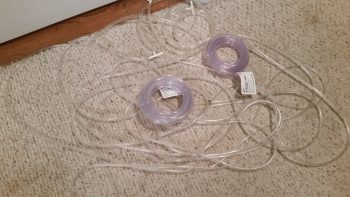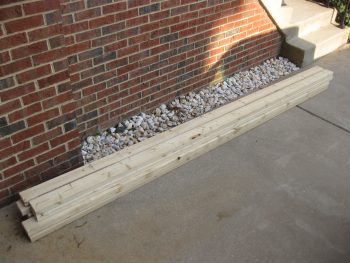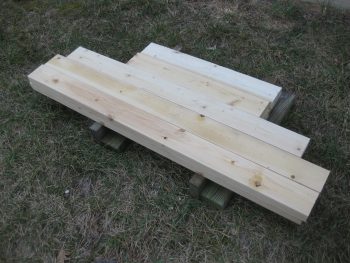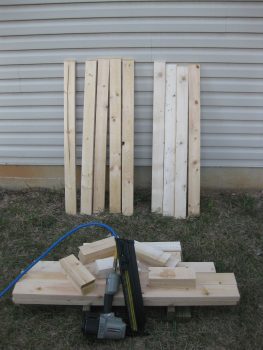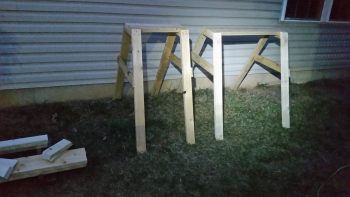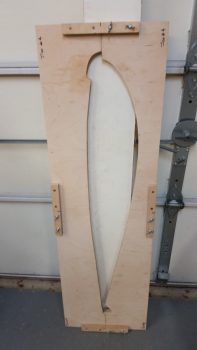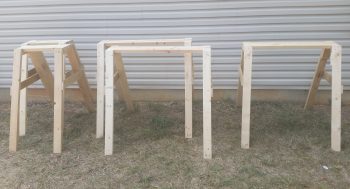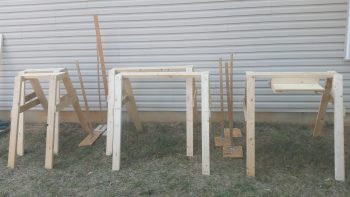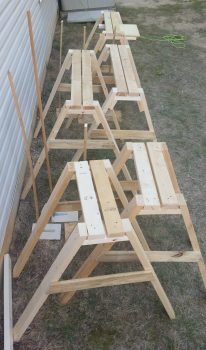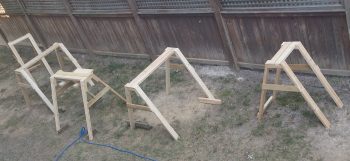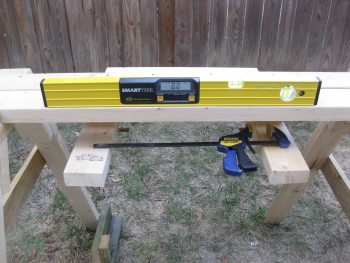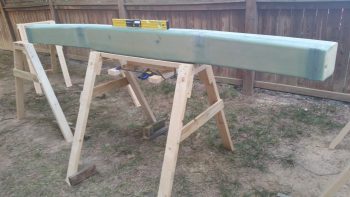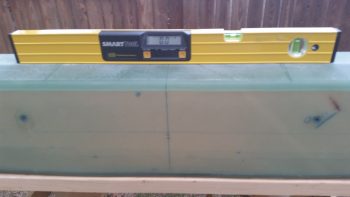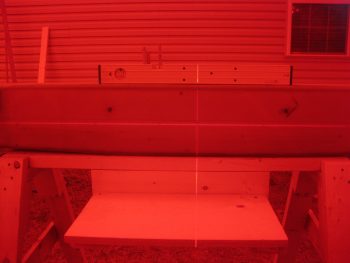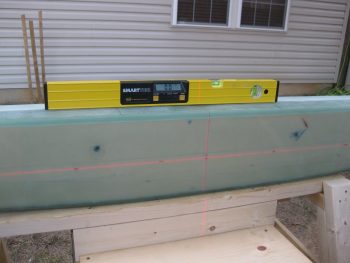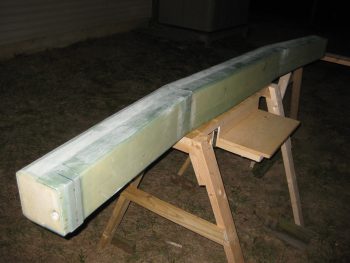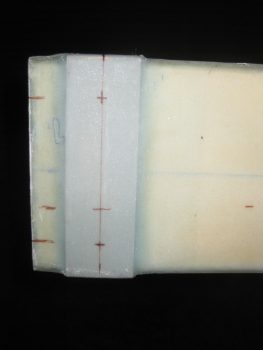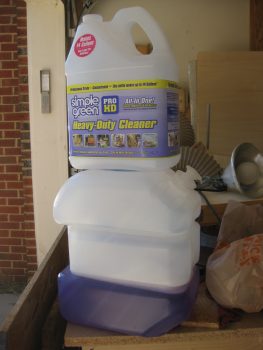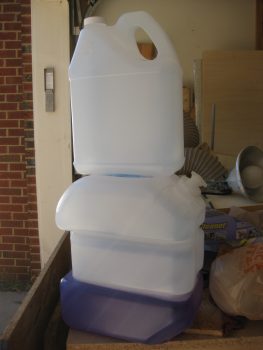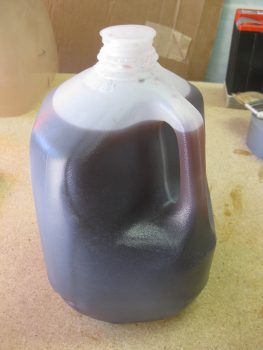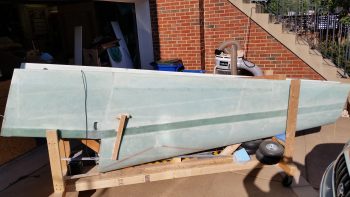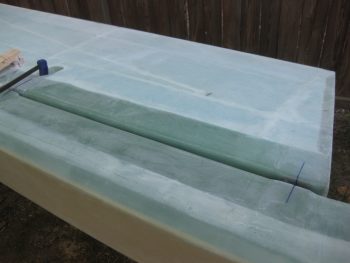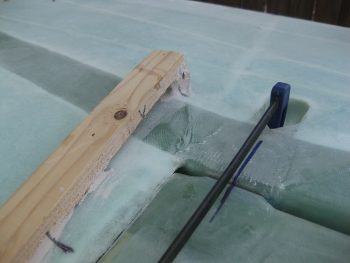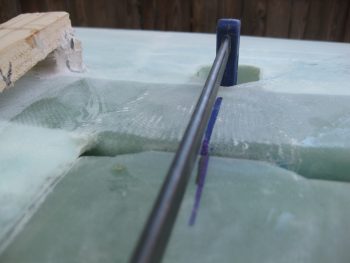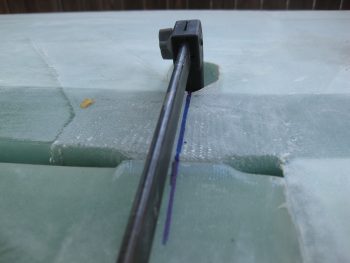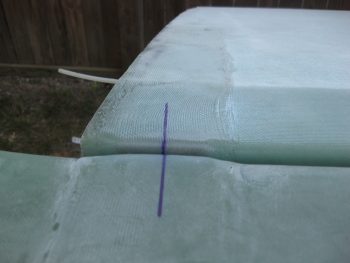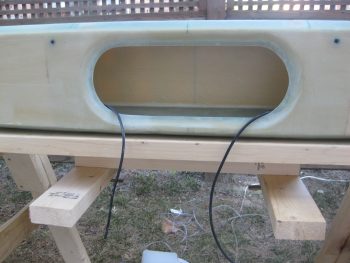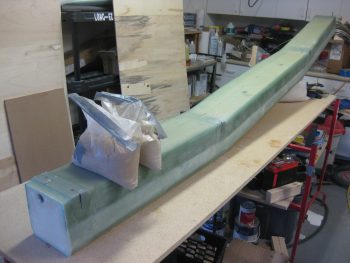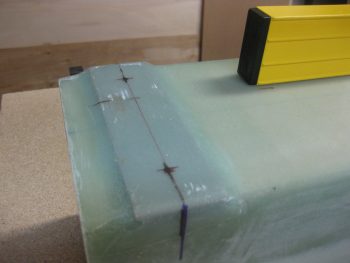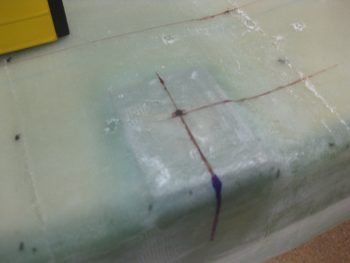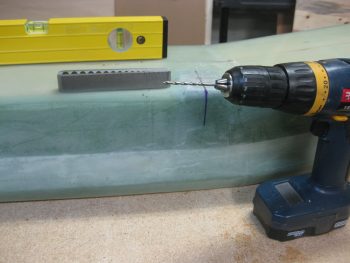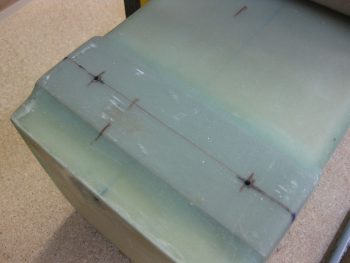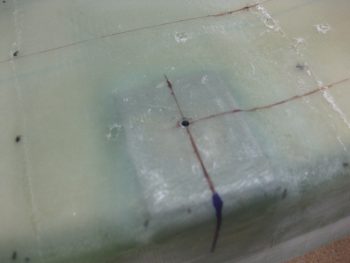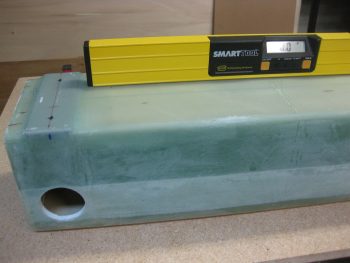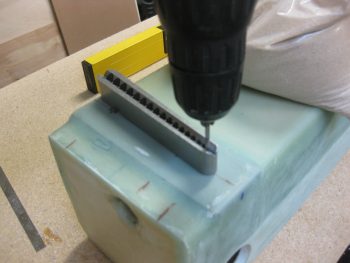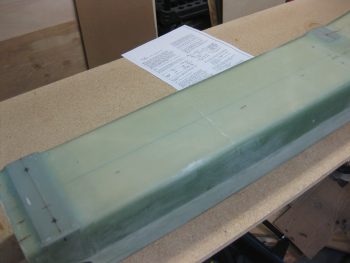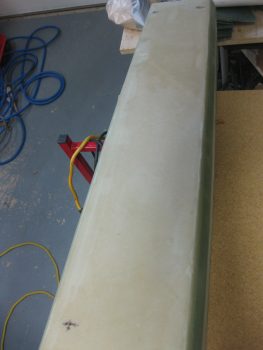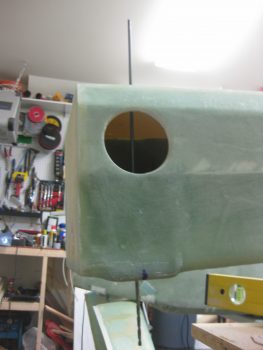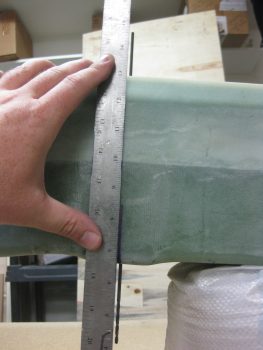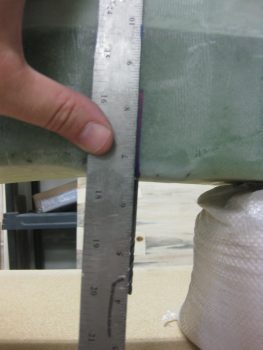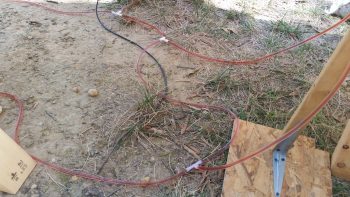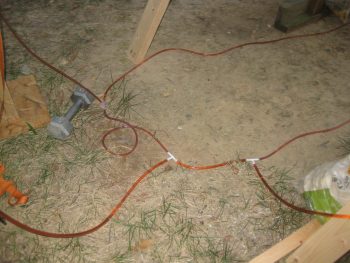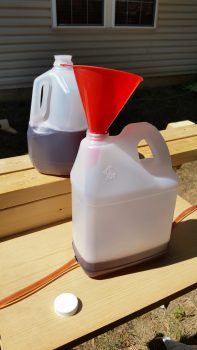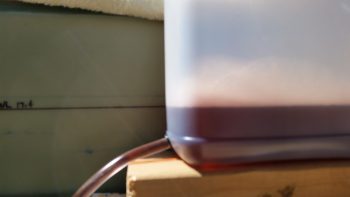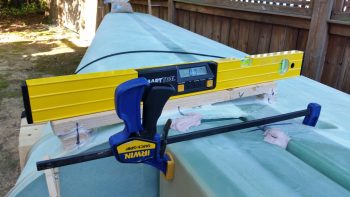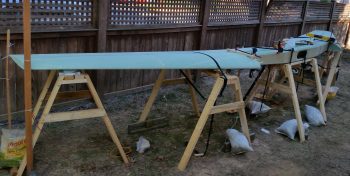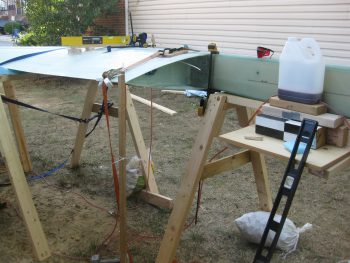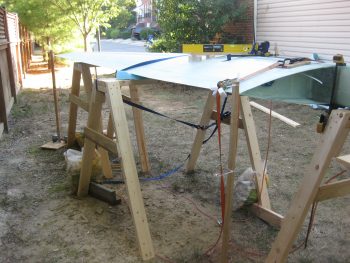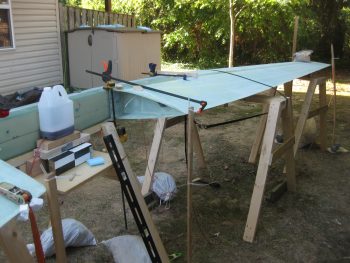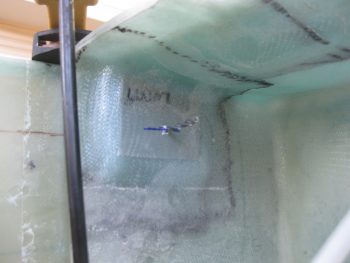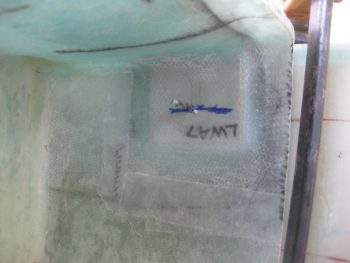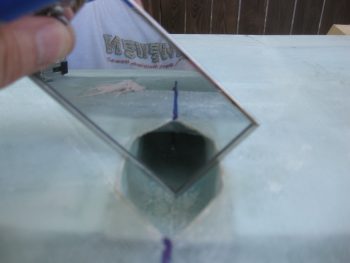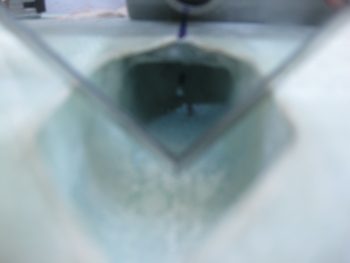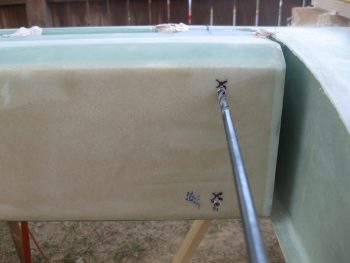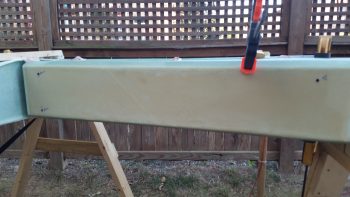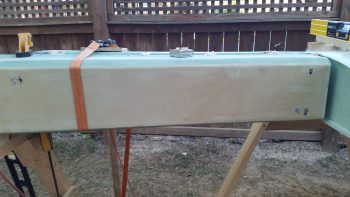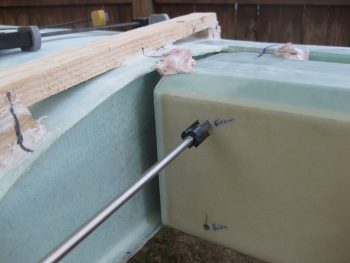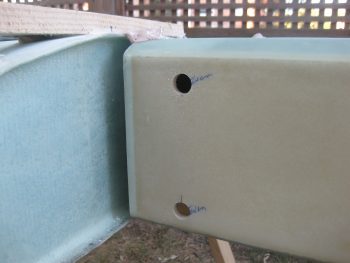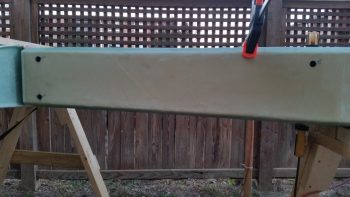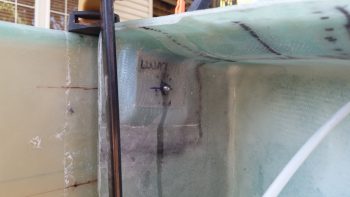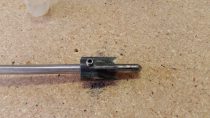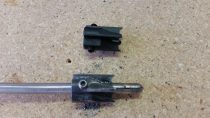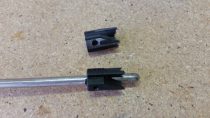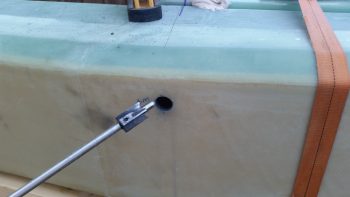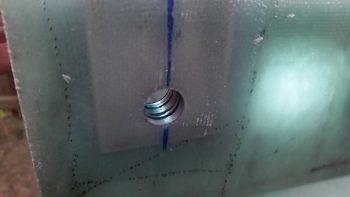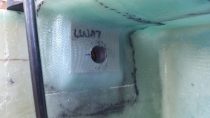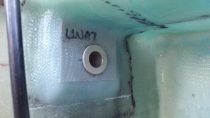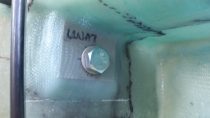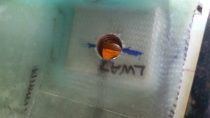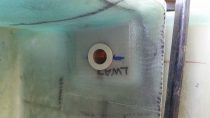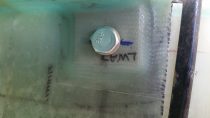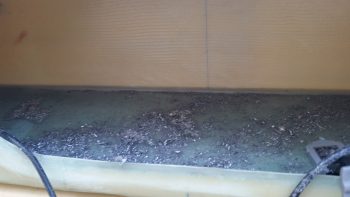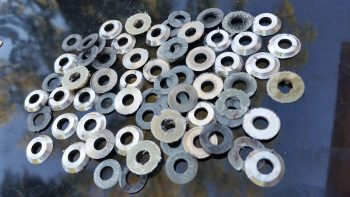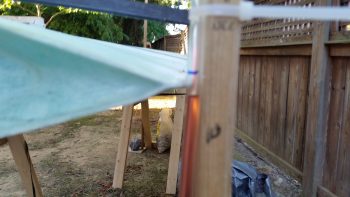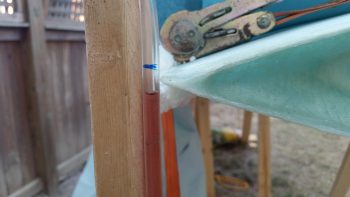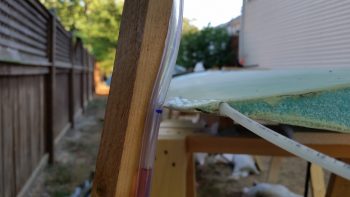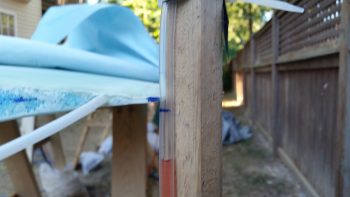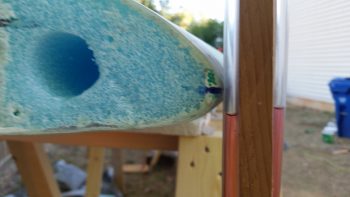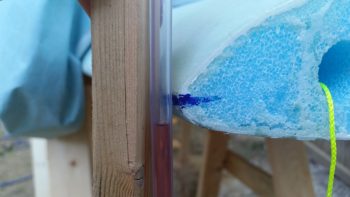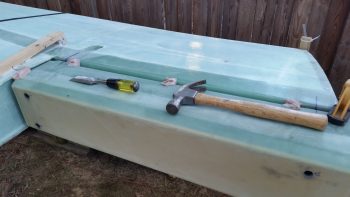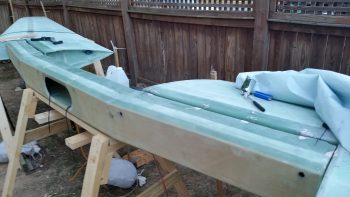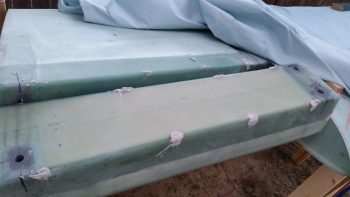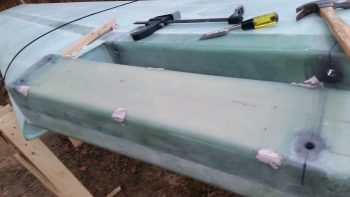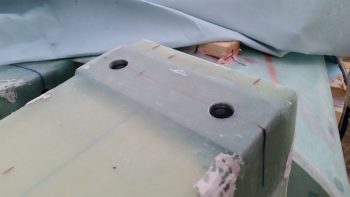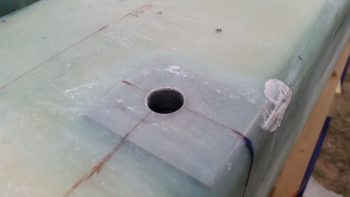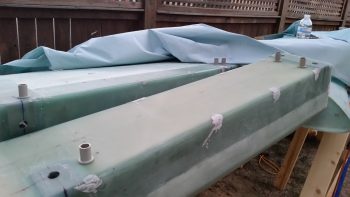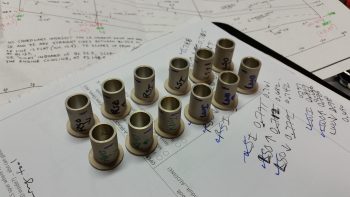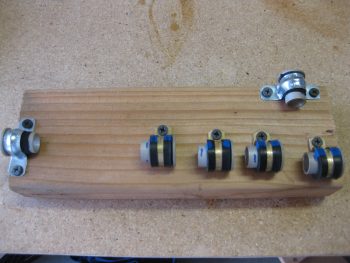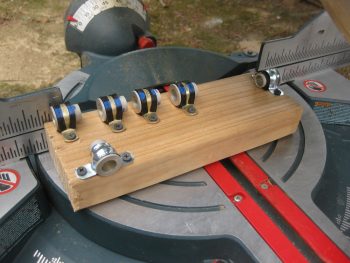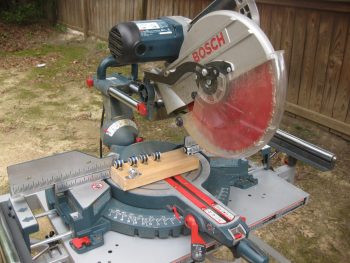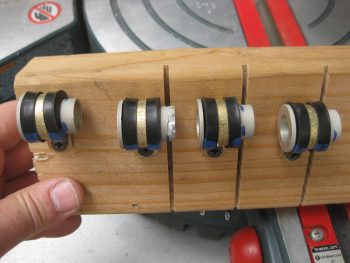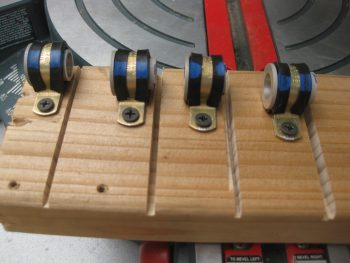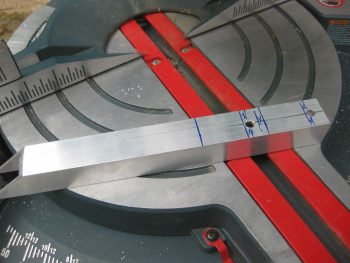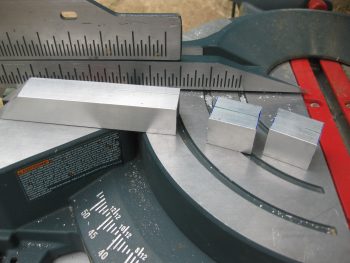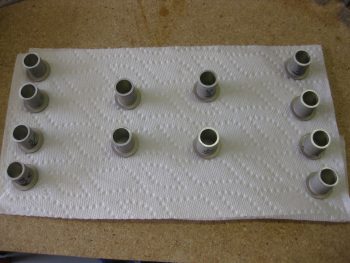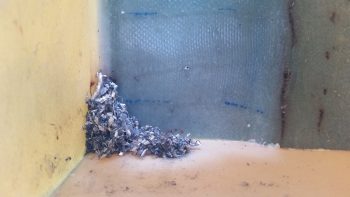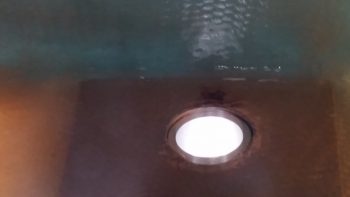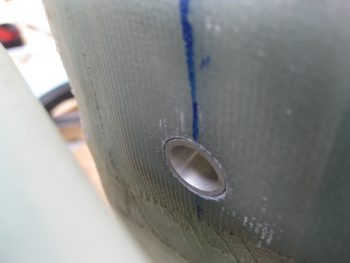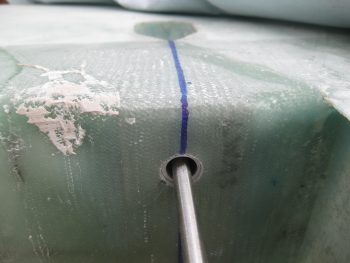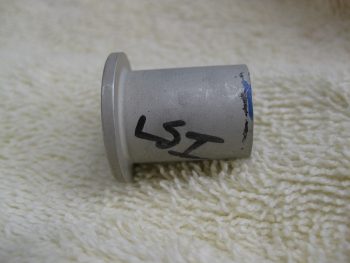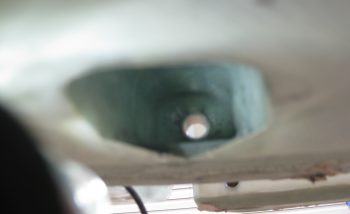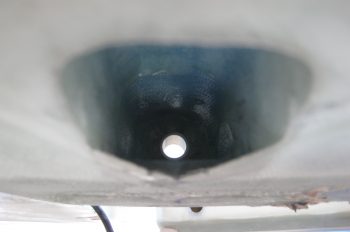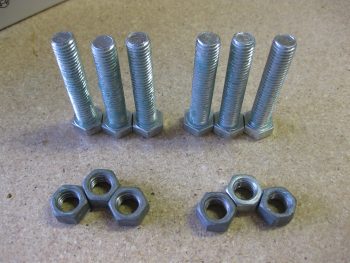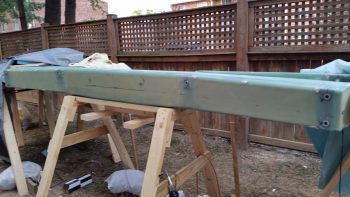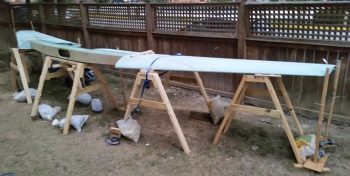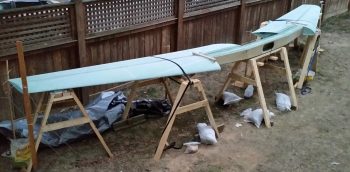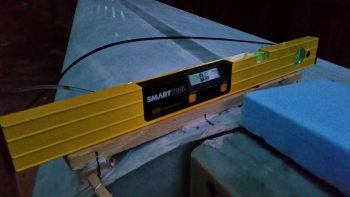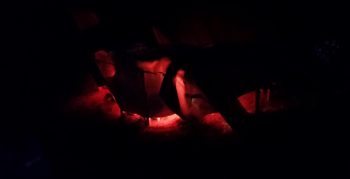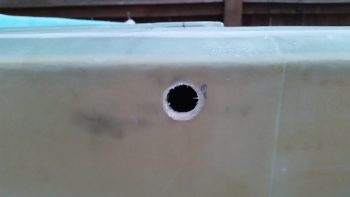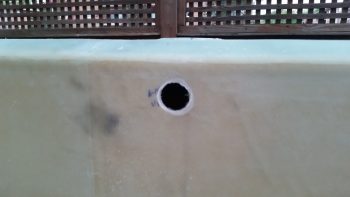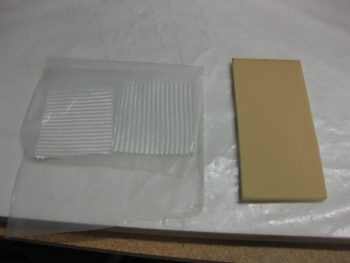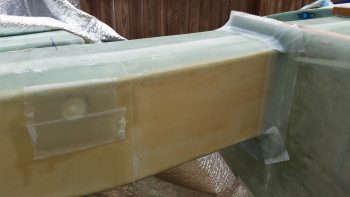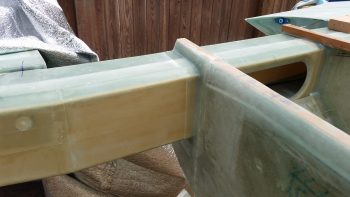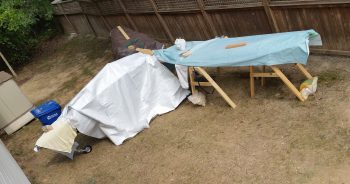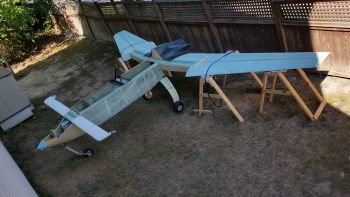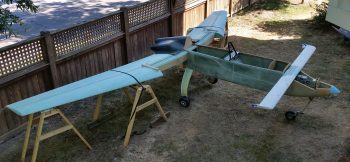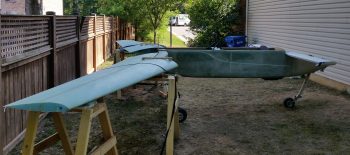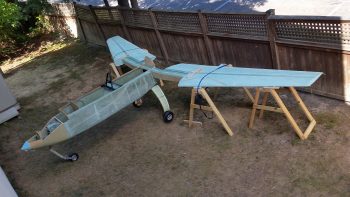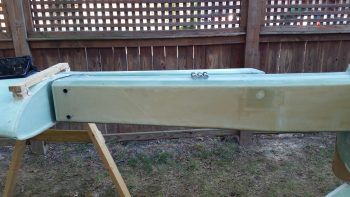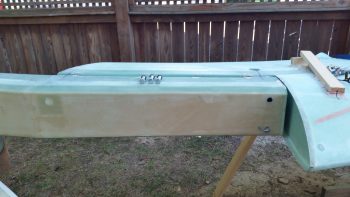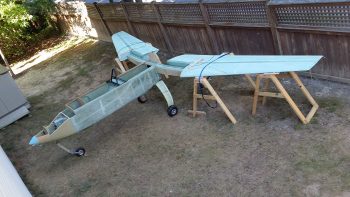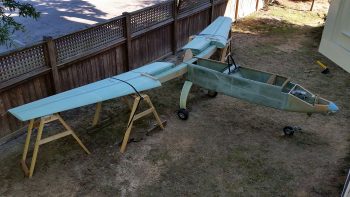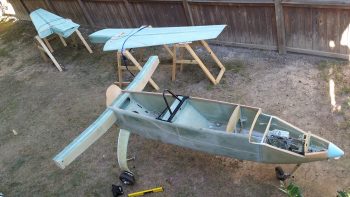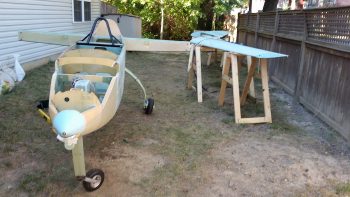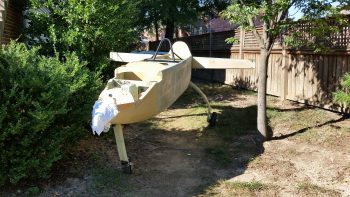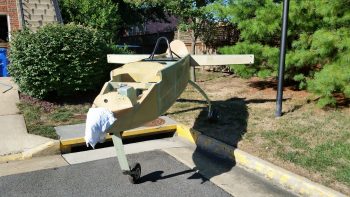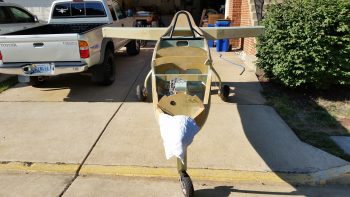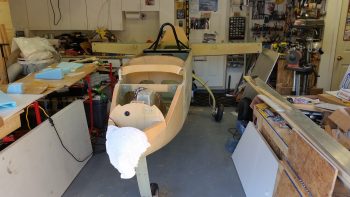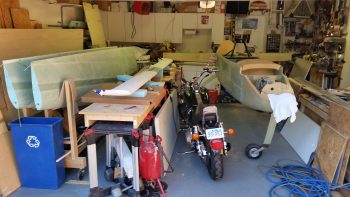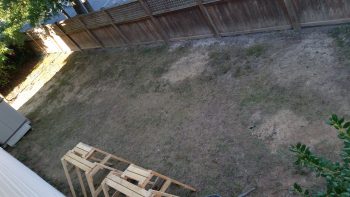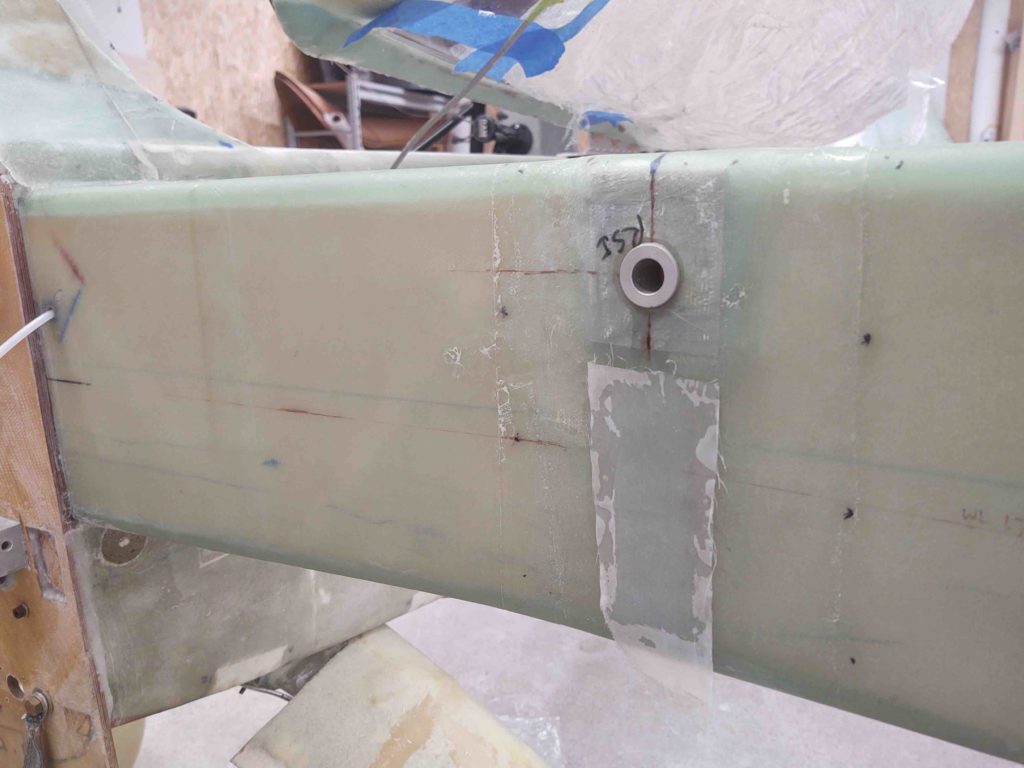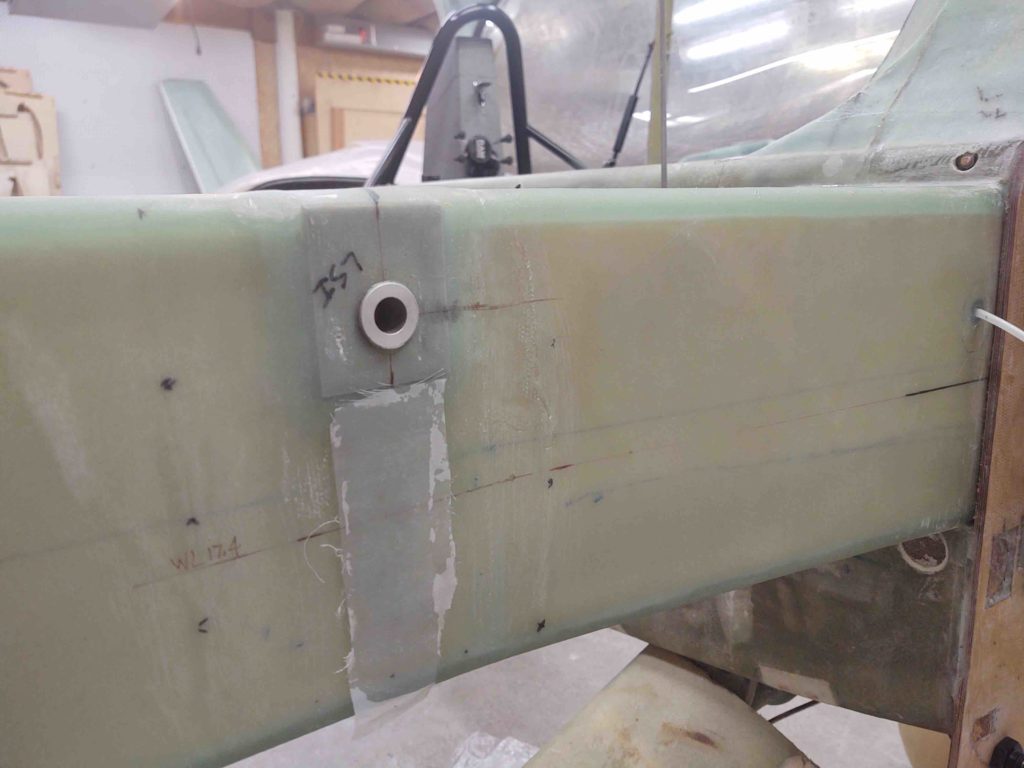Chapter 19 – Mounting Wings to CS Spar
30 August 2016 — I don’t have pics of today’s progress because it was pretty much all research and coordination. Although I have been trying to get into the shop to get the wheel pants prepped, I think it’s more important to get the Wings mounted to the CS Spar, then the CS Spar mounted to the fuselage. Then, finally, the last piece of mounting flight lift surfaces will be mounting the Canard to the fuselage.
I continued to consult the plans and research other builders’ techniques, taking special note of any builders tips and issues they may have encountered. In addition, I had a good discussion with my local EAA Chapter 186 (Manassas, VA), and my buddies Marco and Mike Beasley. Mike has finished all the major aircraft structures on his Long-EZ and is in the finishing stage, so he has amazingly valuable insight on how to do this.
The main topic of conversation I had with my EAA folks is in locating a suitable place to mount the wings to CS spar, etc. They don’t have anything available at this point, so I’m in hunt mode for a good location with enough size that will allow me to complete these next few steps. One reason why I’m focused on getting this done soonest is that the weather is forecasted to be pretty good here for the next 10 days, so I’d like to get moving of major pieces part done while the WX is cooperating.
I’ll continue researching in order to find a good build location and should have my plan nearly finalized for these next few steps.
•••
31 August 2016 — I started off today by heading to breakfast and building my plan for mounting the wings to the CS spar, the CS spar to the fuselage and then the canard to the fuselage. Still many moving parts to work out, but I hope to have it all done before I head out to Rough River.
•••
4 September 2016 — Today I went to Lowe’s and bought 8 each 10′ 2x4s specifically for building sawhorses to mount the wings to the CS spar.
•••
5 September 2016 — Today I went to Lowe’s & Home Depot to research PVC tubing and fittings availability for the water level that will be used in mounting the wings to the CS spar. I also did a fair amount of research online of other builders and incorporated their lessons-learned on wing mounting into my plan.
•••
7 September 2016 — This morning I sat down and created a to-do/task sheet for mounting the wings to the CS spar, free-associating any task I could think of related to the process, and then printed out the sheet. From there, I ran out to grab a bite to eat with sheet in hand and added a bunch more to it while I sat there pondering the wing attach steps. I also drew out a basic diagram of the multi-legged (or “spidered”) water level that I will need to incorporate to ensure the wings are level at all the right spots before drilling the wing attach bolt holes.
I then went home and inventoried all my clear plastic tubing and associated fittings. I also drew out the dimensions for the saw horses and was about ready to go outside to cut up the 2x4s I bought the other day when it started pouring down rain. Oh well. So instead I jumped in the truck and headed to the Woodbridge Lowe’s to secure 40′ more of plastic tubing and a few more “T” fittings. I know a lot of builders use PVC pipe in their water level setups due to the low cost, but I don’t like NOT being able to see any air bubbles in the line since it can/could really throw off a level reading.
I already had 50′ on hand from a water level that I had bought for another project, added to another 12′ from the shop, which gave me over 60 feet of tubing. I calculated at lunch that I would need around 100′ for the water level setup I’ll employ… which is pretty much identical to Bernie Siu’s as far as the wing points that I’ll be measuring.
I’ll refine my water level spider plan and test out a few machinations of it before setting up the wings & CS spar outside.
•••
8 September 2016 — This afternoon I set out to do what I had planned on doing yesterday: building the sawhorses to which to mount the wings & CS spar upon, in turn to allow me to mount the former to the latter!
I dialed in the heights and lengths on the sawhorses and begin cutting the 2×4 lumber. Below is a shot of the respective top boards for all the sawhorses.
I got all the tops & top cross pieces cut, but when it came to the legs I was only able to squeak out 9 legs, out of the required 20 . . . Yikes! I decided to go ahead and build the first 2 sawhorses and then make a run to pick up more lumber. Instead of using screws to construct these sawhorses, I decided to go the faster route and pulled out my mojamma framing nailer.
It took less than 20 min to whip up these babies. The narrower sawhorse to the left is for the outboard wing and the one on the right is to support the main body of the CS spar. Ok, 2 down and 3 to go! By the way, I should note that I shamelessly stole the design for these sawhorses from my buddy Mike Beasley.
It was actually a pretty good thing that I decided to cut the legs for the middle CS spar sawhorse and the 2 outboard wing sawhorses first. Why? Well, when drawing up my plan for these sawhorses, I was mentally going off of what Wayne Hicks and Mike Beasley did when they mounted their wings to the CS spar. They both pulled out their TWO wing jig #4’s and used them, one on each wing. Then it hit me (a few DOH moments today!), I only have ONE wing jig #4! And I don’t plan on making another one…
You see, I had accounted for the distance between the bottom of the wing jig and bottom of the wing and was going to subtract this from the height of these 2 inboard sawhorses when I had my mini-epiphany. I’m just thankful I caught it before making 2 sawhorses that were too short (obviously too tall would have been workable).
I packed up all my saws, tools & gear and put them in the garage before heading out to get more 2x4s. Upon my return to the house, I unloaded the lumber and then got to work sanding the mating surfaces of the wheel pants.
•••
10 September 2016 — I started out today rereading the Chapter 14 and 19 plans sections for installing the wings to the CS spar, and the CS spar to the fuselage. I then printed out those pages to use along with my other task list sheet as reference when installing the wings, etc. I then made up a Chapter 19 specific to-do list on a 3×5 card.
The first task on my to-do list was to finish building the sawhorses for mounting the wings to the CS spar. So that’s what I did.
After the initial completion of the sawhorses, I added a round of 2-1/2″ screws to buttress them up a bit. I also added a shelf on what will be the aft side of the CS spar sawhorse (pic below, right side) for the water jug that will serve as the central reservoir in my water level system.
Here’s a long view of the sawhorses that I finished building today.
And another pic after I set them out in a general setup for when the CS spar and wings are mounted on them.
In preparation to setting up the CS Spar on the middle sawhorse, I ensured that it was level.
I then took a few minutes to get access to the CS spar hanging on the shop wall. I pulled it down, took it outside, set it on its respective sawhorse, and then ensured it was level as well. In addition, if you look closely in the pic below you’ll see that I marked the center lines of all the CS Spar hard point extrusions.
Here’s the CS Spar level at 0°. Once I leveled the CS spar, I found and marked the 17.4 WL right at the aft spar CL.
Then, so as not to blind any neighbors, I flipped the spar around 180° to shoot it with the laser level. Of course I ensured the spar was level again after I flipped it around. Once I had the laser crosshairs centered on the WL17.4 and spar CL, I then marked the 17.4 WL in multiple places horizontally on the back face of the spar.
Here’s a ‘normal’ shot of me shooting the spar with a laser level in order to find & mark the 17.4 WL.
I also determined and marked what the plans call out as the “A” & “B” marks that help ensure the wing hard point extrusions are aligned with the CS Spar’s extrusions.
Below is a closer shot of the markups I did on the outboard CS Spar extrusion. My measurements and dimensions are showing up a hair off, but that’s not too surprising since I did reshape the outside of the CS Spar to make it narrower to better align with the inboard wing root (remember, I made my wings first so I knew exactly their thickness before building the spar).
•••
12 September 2016 — As far as the wings today, I took a break from the prep action and ran up to Home Depot. I wanted a better jug to use for the water level system (the old one is on the bottom in pics below) so I grabbed a plastic jug of Simple Green. I then poured the Simple Green into the old water container that I had considered using for the water level [it’s too big & heavy].
After getting the water level jug squared away, I then mixed up a few packets of Kool-Aid to use as coloring [Tip: Kool-Aid is WAY cheaper than food coloring!].
After getting a bunch of the preliminary prep work out of the way, it was time to finally break out the wings from their multi-year bondage in my work shop!
Although I actually took this pic a bit later, I wanted to post it here so you can get a good visual as to what I was doing.
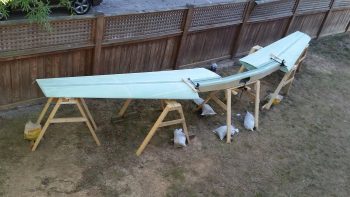
I started by clamping the ring wing to the CS spar to check the “A” & “B” lines as it states in the plans to do (“Waiter” really emphasizes this step as well). I have to say that the marks are very close between the wings & CS spar, but there is a bit of tweaking that I’ll do –on the order of 0.04″ to 0.07″– to better hit center mass of the extrusions while drilling.
Here’s a shot of my right outboard alignment… not too bad.
And another shot to show the alignment.
Here’s a shot of the alignment on the left wing.
And the inboard bolt extrusion area on the left wing.
I wanted to take this pic not as much for showing the antenna wires from the wings, but the fact that by using that conduit that I installed between the outer & inner CS spar bulkheads, I was able to slide each antenna cable into the CS spar in about 5-10 seconds. Very EZ!
I then set about drilling the 1/8″ pilot holes in the CS spar. The plans call for a #10 drill bit be used for the pilot holes, but then again I’m following a lot of Wayne Hicks’ advice and he recommends using a 1/8″ drill bit (it’s more forgivable & RE-adjustable if off center).
Since my spar narrows a bit more top-to-bottom than standard spars do to account for wing thickness, I had to be extra diligent on finalizing the positions of the plans dimensions for drilling wing bolt holes into the extrusions.
Here’s another markup on the inboard side of the strut.
To ensure my holes are a good 90° to the face of the extrusion, I’ll be using my new drilling block.
Below I’ve just drilled out the 2 outboard 1/8″ pilot holes in the spar on the right side.
And the same for the inboard extrusion.
I then flipped the CS Spar around and started in on the left side.
Here I am using the drilling jig to keep the bit straight.
And Voila, here are the 1/8″ pilot holes drilled into the aft side of the spar.
Then, as per plans, I marked up the front side of the CS spar for drilling the forward side spar boring holes. I have to state that when I started on the outboard holes it wasn’t until I got around to finding the inboard hole to drill that I realized the spar was upside down to me… which my outboard holes were way off! Not that it matters because these holes can be left open, and they’re close anyway that once I start using a 5/8″ bit they’ll go away… but it is somewhat of a testament of using a 1/8″ bit to start since it keeps the holes small & manageable.
Here’s a shot of the long 1/8″ drill bit that I put into place after drilling each forward spar face hole.
I used a long ruler to double check the angle of the drill bit on each hole so as to ensure that the bit wasn’t heading into the wing extrusions at an odd angle!
•••
13 September 2016 — I started off today reviewing the plans on installing the wings to the CS spar… to ensure I don’t miss anything.
Then I constructed the water level system. I have 2 shots of that below, just to ensure some clarity.
The jug in the foreground is the actual reservoir for the water level system, while the milk jug in the back is simply the Kool-Aid colored fluid (plus a little dish soap) for the water level.
Here’s a closeup shot of the water level reservoir. It’s a bit out of focus, but you can see one of the two lines coming out of the bottom of the water level reservoir jug with a grommet installed to seal it all up. Also, note that the water level in the main reservoir is matched level with WL 17.4.
Here’s a quick video I shot detailing the general features of my water level system:
The water level is an amazing tool that allowed me to really dial in the rigging of the wings to the CS spar. Below is a shot of the Right Wing after I leveled it out and bondo’d it in place. Let me tell you, the term “herding cats” that all the other builders use to describe this part of the build is amazingly appropriate. It took about 2 hours per wing to really get all the variables synchronized to get the wings to level out appropriately. I remained about 0.15″ high on outboard leading and trailing edges, but I’ll take that!
Here’s a wide angle shot showing the right wing rigged and work on the left wing to get it set.
And here’s a couple shots of the left wing as I worked to get it level. The left wing took significantly longer than the right wing, and after getting all but the front inboard edge aligned, I finally (out of curiosity) set up the laser level to check the leading edges of both wings. For some reason my level board was way off on my left wing, so I committed a cardinal sin and went with the good level measurements on the other 3 corners, and used the laser level to fix the front corner (the BL 55.5 jut out) to match the right wing. One overriding reason I did this is the statement in the plans on pg 19-18: “Incidence must be set exact, or the airplane will roll.” Now, at that point the plans are talking about the setting of the level boards to 0°, but I also take that statement to mean the wings leveled in concert & in comparison to each other. Regardless, it certainly made everything work and align well on the left wing after I made the decision to use the laser level to match the leading edges vs going with the level board.
Here’s a shot of the right wing after it was secured in place by bondo. Both my wings are about 0.15″ high on the outboard end, but as I measured everything I concluded that my wings are definitely symmetrical!
After I bondo’d the left wing, I prepped for drilling the 1/8″ pilot holes through the front spare face and into the wing hard point extrusions.
Below is a shot of the right wing’s inboard extrusion. Since I had to lift the inboard wing roots as high as they could feasibly go to align the wings, it lifted the embedded extrusions as well. Thus, the drilling is a little low to what I want on the inboard wing extrusions, but not too serious. I will also try to cheat the hole upwards as I drill out the bigger extrusion holes.
Here’s the same exact thing on the left side.
I will tell you one area that I’m ecstatic with, and that’s that I was able to get the 1/8″ pilot holes pretty much in the exact center of all the wing bolt troughs! *** whew!!!! *** I think this honestly must be the most anxiety that a canard builder can feel is when drilling these holes!
This shot is a bit blurry, but you can see the drill bit in it.
After all the 1/8″ pilot holes were drilled and verified, I then opened up the holes to 1/4″ as called out in the plans.
Below is both the right and left spar faces with 1/4″ pilot holes.
I then grabbed my 5/8″ spot face tool and opened up all the forward spar face holes with it.
Here’s the right side holes opened up to 5/8″.
And another wider angle shot of the right side CS spar front face with the wing mounting holes opened up to 5/8″
After opening up the front spot face holes I then drilled the CS spar and main wing extrusion holes for a bit over 2 hours. I was having drill & drill battery problems, plus it was dark, so about 2100 I called it quits and packed up all my gear. I figure I got anywhere from a half to 3/4 of the way through on these holes.
•••
14 September 2016 — I started off today right where I left off yesterday . . . drilling, drilling, drilling, drilling, and then drilling some more. Let’s say about 5 hours total today, with over 2 hours last night!
Yep, I was one of those builders who used the plan’s spotface tool to drill this sucker out. I can say now that it’s over that I’m glad I used it, because the holes are perfectly round and beautiful! That being said, if I knew of another really good way (yes, I’ve read about modifying hole saws, reamers and the like, but I went with with the spotface tool… Ironically because the 5/8″ bi-metal hole saw bit I ordered didn’t arrive in time! ha!)
One of the main reasons it takes so long to drill these holes is heat management. Yes, it may be a lot better with a different cutting/drilling tool, but with the spotface tool I would drill for 10-15 seconds, blow compressed air into the hole for 20-30 seconds, and then (starting today) wet it down thoroughly with cold water from a water bottle sprayer. These holes definitely get hot, especially due to the torque! And this was even more pronounced the deeper into the hole since the entire side of the spotface cutter was contacting the sides of the hole. Tons ‘o heat generated in this endeavor my friends! In fact, my cordless drills were struggling when I started out using them (my corded drill was buried away in my shop) and I even smoked one after pushing it too hard… even though I was rotating through 5 different cordless drills! And let me state for the record that the newer generation Ryobi Lithium batteries are a joke, many of them could barely make it through a couple rounds of holes.
Nonetheless, I eventually got the holes drilled! Whew! What a feeling . . . especially when they land in the right spot! Below is the first light at the end of the tunnel I saw late this afternoon.
Luckily I bought another spotface from McMaster-Carr before I started, because the original one I had was worked HARD! The swapping of the old to new spotface was a bit of challenge unto itself. I had to drill out the set screw that was covered over with metal, and then the spotface didn’t want to come off the guide, as if it were welded in place. I eventually got it of course, but not without some wailing and gnashing of teeth!
Here’s a staged photo showing the spotface just about to go in and do some real damage!!! Ok, maybe just a little bit of damage . . . ahem.
And here’s the other side. I took this shot to show all the layered extrusions that make up the inboard hardpoint on the wing (this pic was taken later after I pulled off the CS spar).
As I drilled out the inboard wing root bolt hole channels I cleaned them up and then test fitted an LWA9 bushing into the hole to see how it fit. The LWA9 bushing fit perfectly in each side. I then slid in one of my test bolts just to see how it would fit as well. With the bolt I was specifically curious to see its spacing since my hole is actually a hair low on the extrusion. But as you can see, there’s plenty of “meat” below the bolt to hold it in place. I have no doubt these hard points are 100% the strength of what they should be.
In the pics below, the top row is the right wing root and the bottom row is the left:
Below is the after affects of drilling out the inboard wing mounting bolt holes. Since I was using both air and water to clean out & cool the holes, it created an “aluminum soup” on the inner floor of the CS spar.
Also, here’s my abstract airplane art shot that I took using all the extrusion rings that I drilled out during this very long process.
I also wanted to document my water level marks for each of the points of the wing that I was checking. The blue lines you see on the tubing are marked for waterlines other than the 17.4 WL.
Below is the inboard TE of each wing at BL 23. Since this curves up just a tad to intersect the cowling, according to plans it’s at WL 17.5. Just as a note, the distance between my two inboard TE corners was exactly 46″…. I like it! Also note, that although the levels at the following points may not be aligned perfectly with the water line (or the blue line), they are very close and also match pretty darn symmetrical between right & left wings.
Here’s the outboard TE at BL157, with the right wing in the top pic. Since the wing slopes as it goes outboard on the TE and down from TE to LE, this WL sits at 18.35 (again, the blue line). So even though these look terribly high compared to the actual reddish water level line, they are within about 0.1″ off from being spot on. Another point I need to make is that the red water level fluid is a bit low after sitting out all night long (you can really see this in the pics above since the blue line is a bit farther off than 0.1″).
Finally, the outboard LE at WL 17.4, which of course is the water line for the entire leading edge.
After rechecking and verifying my water level marks, it was time to remove the CS spar from the wings (aka “Bondo Destruction Time”).
I removed all the bondo that I could get to on the top & bottom of the CS spar & wing junctions.
I then cracked the CS spar loose and turned it on its face. Then I got to work removing even more bondo.
Here’s the right side of the upended spar requiring more bondo removal.
I also washed all the gray aluminum grime from around the bolt holes with Simple Green and was very happy to find no delams!
I then started work on the LWA9 bushings. I put them by their respective holes and marked them up so that they would match the depth of the specific hole they were being cut for. I then measured the depth of each hole using the recommended hole depth checker identified in the plans [NOTE: As I was cleaning up the next day I found a depth checker in the bag that the Cozy Girrrls shipped the LWA9s… oh, well! Just a point of note that if you buy these from the CG’s that it comes with a depth checker, so you don’t have to spend an extra 5 minutes making one!]
I then packed up all the tools for the night, and marked up all my LWA9s for trimming.
•••
15 September 2016 — Yes, my friends, the wings are officially mounted! Today I bolted the wings to the CS spar for the very first time! How?! Well, read on dear readers! Read on . . . !
Last night I was in a bit of a quandary. I had been thinking late into the evening on how exactly do I trim the LWA9 bushings to length? In the plans it says to “face” them… not sure what that is. I don’t have a lathe, but I do want some nice cuts on the “face” of these LWA9’s. Hmmmm. I attempted to do some research online, but to no real avail. Everyone in the universe seems to know how to trim these suckers up except for me! (I guess this is a common occurrence when building an airplane, eh?!).
So I did what I quite often do when faced with a problem… I went to breakfast!! (this morning, not late last night…). Ah, it was there that I wondered upon the idea of using a pipe/tubing conduit attachment as a clamp to hold the LWA9 in place. I would then use my mojamma Bosch miter saw to cut these suckers. Yep, a plan was developing!
So I went to Home Depot and picked up some of those pipe/tubing conduit attachments. The smallest they had was 1/2″, so I picked up some friction tape as well. I wandered around the Aviation Electrical section for a few more minutes to see what I could find interesting, when I happened to sight some Adel clamps hanging at the end of the aisle. Hmmm, could also be an interesting proposition . . .
When I got home I “clamped” a couple LWA9s to a scrap 2×4 piece, and then rounded up some -10 Adel clamps & mounted those as well. I call it the “poor man’s lathe.”
I then pulled out the Bosch mojamma miter saw to see how this all would work.
Ready!
Well, it worked great for the LWA9s in the Adel clamps! Not so much for the pipe/tubing conduit attachments…. Ooof! Check out the second LWA9 from the left. This was round #2 and I took out the 4 freshly cut LWA9s and replaced them with 3 new ones and this mangled one from an attempted cut while mounted in the pipe/tubing conduit attachment. Luckily it didn’t do any damage inboard of my original cut line, so once I trimmed it in the Adel clamp, there was no trace of the horrors that it had just previously endured!
And here are those same 4 LWA9s after getting a trim. I tell ya, with a nice sharp saw blade this thing works like a champ!
In addition, as I was brainstorming (just prior to trimming the LWA9s) on all the stuff I needed to cut, to optimize my saw time, I worked up a quick off-the-cuff solution for a bracket to mount inside the CS spar in order to reverse my outboard wing bolts. This has them essentially permanently mounted sticking aft out of the spar. The report from many builders who did this is that it makes mounting the wings infinitely easier & faster. James Redmon –from Berkut 13 fame– did this on his bird, a pic of which I shamelessly stole from his website:
Note that the pic above is of a Berkut, not a Long-EZ, but the concept is the same. However, as with many things on this build I had to go and complicate it by adding in my 1″ electrical cable conduit hard-mounted inside the spar. That means instead of simply screwing in a single piece of U-channel, I’ll have to build a more intricate one with a “bridge” to cross over the electrical conduit. The smaller pieces that will make up one side of the bridge are what I’m cutting below. Consider this a teaser on the ‘Reverse Wing Bolts Mod’ . . . more to come later!
Moving on, here’s a shot of all 12 LWA9s after I sanded the trimmed face of each one, and then quickly chamfered the outer & inner edges of the new faces. I also gave them a good bath in Simple Green.
When I went back to the spar & wings my first task was to pick up the spar and flip it around to give me better access and a better angle to work on installing the LWA9s. And then the darnedest thing happened!
As I was lifting the spar up over my head, it shifted hard to one side and I almost dropped it. I got a hold of it as I was facing the low end of the spar just above the ground. And that’s when I saw a TON of water pouring out one end of it! Not only was it water, but the aforementioned aluminum soup (which I had cleaned out)! Of course at that point I tipped, flipped and swirled the CS spar every which way but loose (like what I just did there!) to get all the water out.
When I finished on the spar, I checked out the end of the spar where the water came out, and this is part of what I found! I went back into the shop to retrieve my shop vac and proceeded (again) to vacuum out this beast.
After giving the spar and the wing bolt hole channels a good cleaning, I then finally got a shot at what I was originally looking for in the first place! The left wing’s upper outboard LWA9. I was checking it for fit since I can’t get my hand up there to feel the edge to ensure that it either matches or is lower in height than the surrounding hard point extrusion.
Here’s the left wing’s inboard LWA9, nice & flush!
And here’s the left wing’s upper outboard LWA9 test fitting… lookin’ good! (I have it installed backwards to check the depth as you see in the pic. Final install was the correct orientation).
Out of 12 bushings I only had to recut one, and that was the left inboard LWA9 in the CS Spar. Actually, I had to cut it 2 more times before I finally got it to the right depth!
Here’s a couple shots of the left wings’s lower outboard wing bolt hole channel with an LWA9 mounted in the bolt hole. The left pic shows the bolt hole channel a little bit better, while in the right one you can make out the LWA9.
Here are the temporary wing attach bolts. I don’t know where I got the info from, but like a maroon I already ordered the big bolts, and guess what?? Yep! Way too short! So even my mock-up bolts were way too short so I had to run to Home Depot to buy 2-1/2″ bolts just before I got started on all this! Once I got home, I quickly waxed all the bolts with Turtle Wax.
Here are the measurements of the matching LWA9s back-to-back, which of course is what is used to determine required wing mounting bolt lengths.
………………………….LEFT WING RIGHT WING
Inboard 1.67″ 1.66″
Outboard Top 1.59″ 1.58″
Outboard Bottom 1.62″ 1.61″
With my LWA9s squared away, I then started on installing all 12 LWA9s and bolting the wings to the CS spar for the very first time!!!
I mixed up some MGS 285 epoxy and threw in just enough flox to give it a tad bit thicker consistency. I then inserted all the CS Spar LWA9s with the wet flox.
I then mounted the LWA9s in the inboard wing bolt holes, slid the inboard bolts in place and lightly tightened a nut in place to ensure the spar stayed put. I then mounted the outboard LWA9s/wing bolts and tightened them up. Thankfully, there were no real issues with installing the wing bolts.
And here’s a shot of my wings now hard-mounted to the CS spar!!!
And the same thing from a different angle… again, amazing feeling getting this done & under my belt!
I then rechecked the water level markings and also the wing level board…. seriously, all the numbers still looked really, really good!
Here’s the final shot of the evening with my wings. Since it’s starting to cool way down at night, I threw some heat blankets over the wings and fired up a couple heat lamps to keep this thing cooking all night long!
•••
16 September 2016 — I then cut the inboard 5/8″ pilot holes on the spar –used for drilling the inboard wing bolt holes– out to 1″ since the edges of the 5/8″ pilot holes were really oily & dirty from all the metal shavings & the spotface pilot rod rubbing against it. [NOTE: Although this step is described in Chap 19, since it’s spar related it’s shown there as well].
Here are my 3″x3″ pre-pregged 2-ply BID pads, and the 1/4″ foam I used to back fill the holes.
I don’t have any pics yet, but I micro’d in the foam into the holes and then glassed up the 2-ply BID pads over the holes. It was dark and I really couldn’t get any decent pics of this.
I then set up a heat blanket & a couple of heat lamps on the new layups.
•••
17 September 2016 — Today was a light work day since I’m heading out to Dulles for the annual Airplane Pull & aircraft display. I spent over an hour cleaning up the surrounding area around the airplane (I think I can say that now!).
I wanted to get a pic of what I didn’t last night, and that’s of the inboard holes filled with foam & micro and then glassed over with 2 plies of BID. You can see that this is the initial shot & exactly what I saw when I pulled the heat blanket off for the first time.
Here’s a shot immediately following me pulling all the peel ply. I haven’t cleaned up the layups so it’s all stiff a but rough. I am, however, very happy with the quality of the layups.
Since I found out last night that we may have a chance of thunderstorms this weekend, and I’ll be very much out & about, I decided to really ensure that the tarps were secured well to keep the sun off the raw composite surfaces, and to minimize any moisture… especially in the nose — which I covered with plastic.
•••
22 September 2016 — Below shows the final fuselage mockup with the upper cowling. I’m posting these pics on this page since the CS spar is integral to all of this.
Removing wing bolts:
Wings detached
Moving fuselage back into shop:
Tight squeeze, but it all fits!
Side yard is back to normal!
•••
21 August 2020 — I cut some scrap BID to give me 2 sets of 3-ply strips to layup below the inboard wing bolt holes. Since I’ll be making all my wing bolts protrude from inside the spar out, I’ll need to drill and mount 2 CS screws below the inboard bolt hole to secure the U-channel bracket, and thus the wing bolt.
I figured I would simply add a few narrow plies (about 1″ wide) to reinforce the area where I will countersink the screws under each inboard wing bolt hole.
I of course then peel plied the layups.

